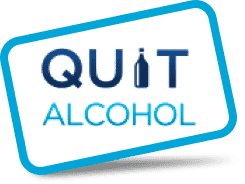We have all experienced peer pressure. Maybe we haven’t all experienced it with alcohol, but sometime in all of our lives we felt pressure from a group or one of our peers to do something we might not to otherwise. As an innocent example, take doing ‘the wave.’ Maybe not everyone would stand up and flail their arms solo, but when your entire row is doing it, there is a peer pressure to join. As a not so innocent example, many people have experienced the peer pressure to drink alcohol. Fact is if you don’t want to, you don’t have to. What feels like monumental pressure to do so will soon fade into nothing, and those who pressured will forget. Remember to stay true to yourself and good things will happen.
How To Deal With Peer Pressure
There are three types of peer pressure: direct, indirect, and self-induced.
Direct peer pressure
Direct peer pressure, the most common, comes in the form of people trying to get you to do something. If you feel you do not want to drink, and your friend Ralph says, “C’mon dude just have some beer,” you have been directly peer pressured. There are several ways to avoid being pressured in. Simply tell Ralph no. Remaining absolute in your answer of no will eventually cause the pressure to subside. If just saying no is too direct or embarrassing for you, make up an excuse why you can’t. Say you have a date later, or have to wake up very early for something. Most people will understand because they can relate. Lastly, an excellent way to prevent this direct peer pressure from even happening is to carry a bottle of water, juice or soda with you. If you already have a drink, non-alcoholic as it may be, people are more likely to avoid pressuring you to drink. This serves as a helpful illusion.
Indirect peer pressure
Indirect peer pressure occurs when nothing is necessarily said, but is implied. For example, if a group of friends bases their hang-out time around drinking, it will become routine to drink when together. Avoiding indirect peer pressure is fortunately quite easy. Any of the above methods can be utilized, but indirect peer pressure can also be avoided by either becoming the designated driver or simply blaming someone else. Being the designated driver ensures your sobriety, but also means you’re tagging along. If you do not want to go at all, just blame why you can’t go on a friend, a parent, or anyone else who wouldn’t mind your using them as a reason not to drink.
Self-induced peer pressure
Finally we arrive at self-induced peer pressure, which is feeling the need to do something outside of your norm in order to fit in. For instance, you may move to a new town, or be enrolled in a new school, and feel the pressure from within to drink, either to loosen up socially or to blend in with those already drinking. This is perhaps the most easily avoidable form of peer pressure. Simply talk yourself out of it. You do not need alcohol to make friends. As a matter of fact, if alcohol is what you use to make your friends, those relationships will be destructive.
Start exploring addiction rehabs
- Free & confidential helpline
- Connect with an expert rehab advisor
- Understand and review treatment options
Peer Pressure In College
College students surely experience the most peer pressure to drink out of all categories of people. According to a study by NYU, over 80% of college students drink at least once bi-weekly, and half of those people binge drink at least once bi-weekly. Another insightful statistic comes from the group Stop Alcohol Abuse: The rate of drinking doubles from age 17 to age 18 for Americans. Because 18 is basically the start-of-college age, surely peer pressure has much to do with this spike in alcohol use.
In 2007, the Surgeon General issued a Call to Action to Prevent and Reduce Underage Drinking, which can be reached in its entirety here, and is a helpful tool for those attempting to educate on peer pressure and alcohol. If we can stop everyone from getting everyone else to try to drink, the world will be a safer place.

